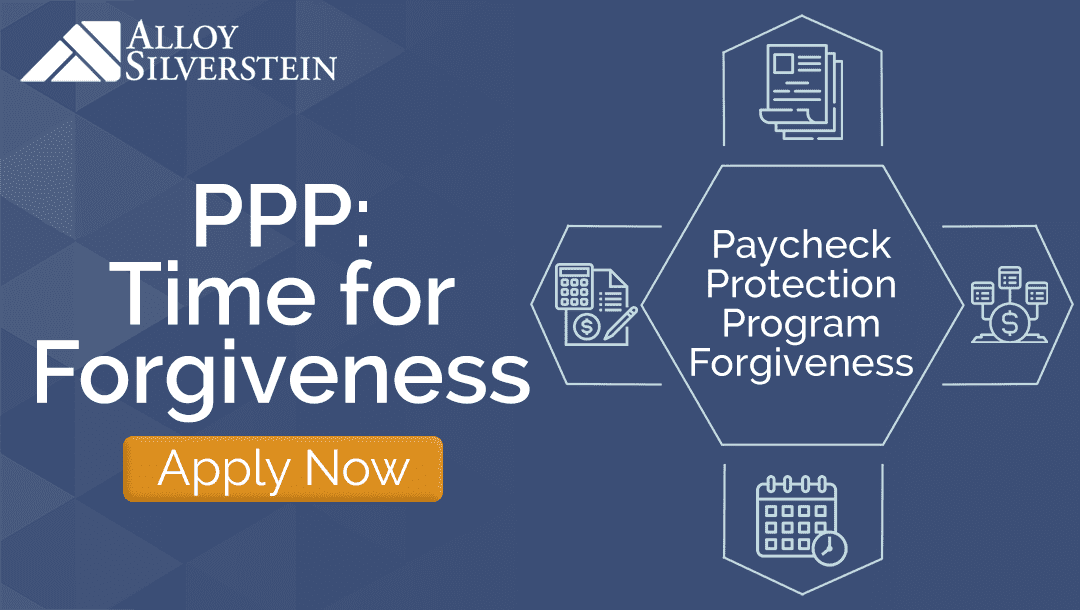

If you secured a round one Paycheck Protection Program loan in late 2020 or early 2021, the time to apply for forgiveness is here. Remember that forgiveness is not automatic nor is it a given. The small business team at Alloy Silverstein can help so your free government aid does not turn into a loan.
Over the last year, over $500 billion was provided to small businesses across the country in the form of forgivable pandemic assistance loans. Depending on the structure and timing of the initial loan, August 2021 is when many business owners now have to switch gears to think about forgiveness. Missing the deadline or having an inaccurate or incomplete application can cost your business thousands of dollars. So long as your PPP funds were used for eligible expenses, you did not reduce FTEs, and kept wages within the acceptable thresholds, you could be on the right path to forgiveness.
Following are a few tips to keep in mind as you begin to prepare your PPP forgiveness application.
Portals are open for most lenders for round one of PPP forgiveness. The exact instructions and required documentation will vary by lender and the application form. It is recommended to be in touch with your lender first and foremost so you are being efficient with your time.
If you have been turning to your CPA or advisor throughout the loan application process, continue to turn to them for guidance during the forgiveness application period as well. The rules can get confusing fast! Every penny counts and a knowledgeable CPA is working with a variety of lenders and businesses and can properly guide you through the process.
Your covered period will guide when you are eligible to begin the forgiveness application process and also what period you will need for documentation. The covered period began on the date the borrower received the loan funds and the borrower selected end date, which was between 8 and 24 weeks. The forgiveness application must be completed at the latest, 10 months from the last payment of your covered period.
The SBA has three application forgiveness forms: 3508S, 3508EZ, and 3508.

The 3508S form is a streamlined edition for borrowers who have PPP loans of $150,000 or less. The 3508EZ form is for borrowers who did not reduce their average FTE headcount during the covered period, did not reduce wages or hours by more than 25%, or the business was unable to operate at normal capacity due to federal COVID-19 health regulations. If you are not eligible for either of those forms, the 3508 form is for you. This one may require additional documentation, so don’t forget to utilize your relationships with your lender, CPA, and payroll provider.
Some lenders have their own digital versions of these applications, so again, be sure to ask your lender about PPP forgiveness before starting the process on your own.
Updated at the end of December 2020, PPP funds can be forgiven only if they were spent on the following business areas:


See the full details in our in-depth article on PPP Round Two updates.
Most applications will need to see proof of revenue reduction, payroll costs, and backup of the above eligible expenses. Keep in mind that the SBA can require you to retain records for six years after the loan is forgiven or repaid and you must provide them if requested. In addition, expenses covered by PPP are still tax deductible, so you will need these records come tax time.
Turn to an Alloy Silverstein advisor for your PPP and ongoing business advisory needs. We are here to help.
Empowering business owners and individuals in South Jersey and Philadelphia to feel confident through proactive accounting and advisory solutions.